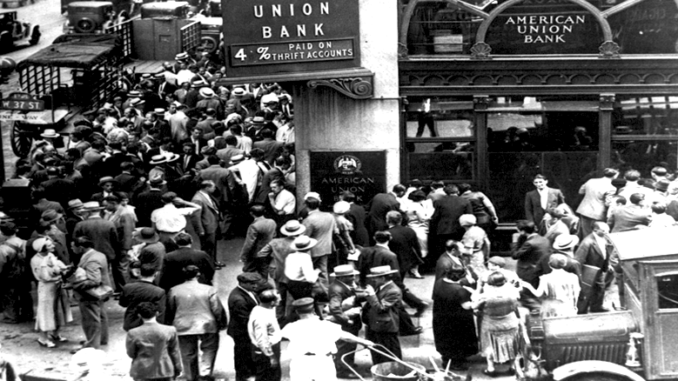
Subprime. That is a term that hasn’t made the nightly news in a while. And
really, why would it? Who wants to reminicse about 2008 and the percentages of
their wealth they lost?
Because it is happening all over again.
In September of 2008, Bloomberg wrote an article titled, “USDA Home Loans: Subprime Redux?”.
It identified how the USDA was STILL making subprime home loans with no money
down and 100% financing to ‘rural’ home buyers. In years previous, the USDA had
allocated about $3 Billion in their budget for home loans. Under Obama, that
number skyrocketed to over $10 Billion. Given how rapidly suburbs and exurbs
around the cities had grown during the housing bubble, there were many areas
that were no longer truly rural being included in the program. Fast Forward to
2011, the Single Family Housing program budget doubled to $24 Billion and has
stayed there.
However, if the only subprime loans on the market these days belonged to USDA,
this would not be cause for much concern.
Enter, the non bank direct lender.
Traditionally, the direct lenders were supporting mid market sized businesses
that did not quite fit into the mold of what bigger banks wanted to allocate
their money towards. But, as investors searched for higher yields, the direct
lender provided a nifty niche for big banks to, once again, enter into the
subprime loan arena.
The Wall Street Journal, in a piece from April of this year, lays out the amount of money
being thrown around again for these toxic loans.
These days, Wells Fargo & Co. and Citigroup Inc. are unlikely to
make a $14,000 auto loan to a borrower with a subprime credit score. That is now
the domain of direct lenders such as Exeter Finance LLC, based in Irving, Texas.But where does Exeter get the money to make subprime auto loans? From Wells
Fargo and Citigroup. They have helped lend Exeter $1.4 billion for that very
purpose.Bank loans to Exeter and other nonbank financial firms have increased sixfold
between 2010 and 2017 to a record high of nearly $345 billion, according to a
Wall Street Journal analysis of regulatory filings. They are now one of the
largest categories of bank loans to companies.For now, bank credit is even flowing to areas where it collapsed after the
financial crisis, such as loans to mortgage lenders. In 2016, for the first time
in more than 30 years, nonbank lenders accounted for the majority of mortgage
dollars extended to borrowers.
So now that we know what and who the direct lender is, why would these direct
lenders put themselves into a position of providing subprime mortgages to non
qualified applicants?
MagnifyMoney.com lets us know just exactly how these nonbank lenders are able
to make these non qualifying loans and prosper in the process.
The management of nonbank mortgage companies enjoys the rich
commissions as the loans are booked. Most of these companies retain very little
capital on their balance sheets. Instead, they are paying dividends to the
owners as quickly as they can. If a crisis happens later, the mortgage company
will go bankrupt. But the owners do not have personal liability.It makes perfect sense for them to book as much as they can, make as much as
they can, and walk away when the music stops playing. And the people ultimately
on the hook are taxpayers. The FHA is standing behind these loans.
Now, mind you, these loans are no longer called subprime, they are now hocked as
non-QM, short for non qualified mortgage. Well that just sounds like an oxymoron
right out of the box, doesn’t it? But they are, indeed, the same thing.
CNN had a great article about this at the beginning of last year, explaining how these
mortgages are being bundled and what is driving them.
Today, the Fed is again ignoring the GSEs and
their potential contribution to future instability. According to Freddie’s 2016
annual report, “Expanding access to affordable mortgage credit will continue to
be a top priority in 2017.” Fannie/Freddie have redefined “subprime” to a credit
rating of below 620; previously, these firms and banking regulators had used 660
as the dividing line that defined a subprime borrower. Now by using the lower
number, they may be buying even weaker mortgages than before the financial
crisis.The GSEs are wrapping new sub-subprime mortgages into the mortgage-backed
securities they sell to the market. Fannie and Freddie guarantee these
securities, and because the federal government stands behind the GSEs, there is
little market discipline. Think about that: With regard to subprime mortgages we
may now be in worse shape than we were before the crisis.
In fact, according to themortgagereports.com, 2018 is poised to be a breakout year for
FHA buyers due to easing of lending guidelines. This begs the question of whether
anyone learned anything from the disaster of 2008.
Why This Matters
Financially, the citizens of this nation are no longer equipped to handle losing
large chunks of their wealth. 2008 robbed many of 30+% of their wealth, of their
retirement money, and years of their time. Non-QM will have the same net effect
as subprime did but it will fall onto a nation that is in debt up to their eyeballs with
credit cards, vehicle loans, student loans, and even more mortgages.
